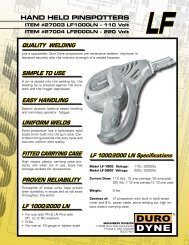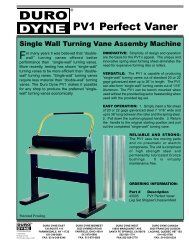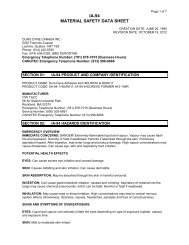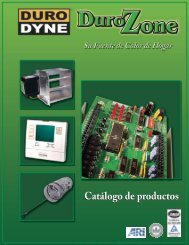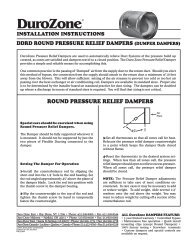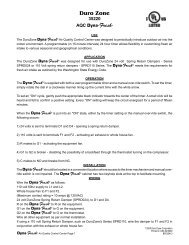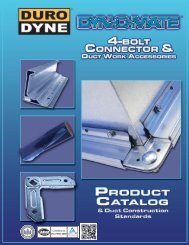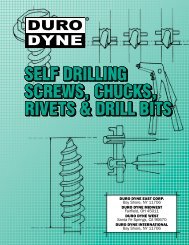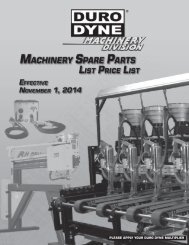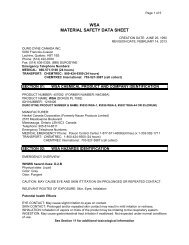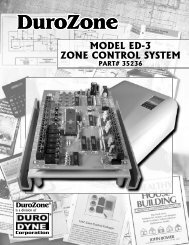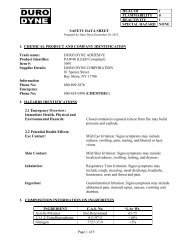DuroZone Product Catalog - Duro Dyne
DuroZone Product Catalog - Duro Dyne
DuroZone Product Catalog - Duro Dyne
Create successful ePaper yourself
Turn your PDF publications into a flip-book with our unique Google optimized e-Paper software.
Planning and InstallationDesigning a zone system for a new installation is slightly different than designing a zone system for a retrofit or existing structure.However, the guidelines are no more difficult to apply than those for existing duct layout and design. A little common sense andpreparation will resolve most problems before they occur.While zoning can offer considerable savings in energy and equipment function costs, the main goal in zoning a home or structure is toprovide greater comfort to the home owner or occupants than is achieved through a single thermostat system. When designing a newsystem, the following considerations should be addressed.What are the different areas of occupancy or usage? Establishing areas of load or occupancy allows the installer to focus on “ZONE”conditioning where people gather at different times of the day or night. For example: The living room, dining room, and kitchen areusually occupied during the day. The bedrooms are occupied in the evening. By establishing these distinct areas as two separate zones,this format not only allows for maximum comfort by matching areas of conditioning with structure occupancy, but it also establishesdefinite usage patterns effectively shutting down or lowering the demand for conditioning in areas of low occupancy resulting in energysavings. This format also maximizes the performance of setback thermostats.Are there any areas that cause abnormal loads? Great rooms, glass walls, cathedral ceilings, hot tub enclosures, etc. - These featurescan put unusual strain on the comfort system. Be sure when creating your zones and sizing your equipment and duct work, you “havea handle on” the usage and loads created by such additions. Depending upon the application, it could be more beneficial to put in twosmaller systems and zone them, instead of putting four or five zones on a larger system.Design Considerations<strong><strong>Duro</strong>Zone</strong> offers two distinct types of zone control panels:Relay BasedThe JTZ and the SMZ 2, 3, and 4 systems use a primary thermostat for Zone 1 that has a sub base that designates the mode of operation(Heating or Cooling). This thermostat also controls constant fan operation. These panels feature mechanical relay operation and haveswitches so you can determine whether a zone will or will not participate in constant fan mode. The SMZ is also available in a “firstcome, first served” auto-changeover design called SMZ-AC. The SMZ-AC is a three-zone system and is compatible with virtuallyany thermostat currently on the market.Microprocessor BasedThe RED4 is a microprocessor control panel which can be programmed by the installer for conventional heating / cooling, heat pump,dual fuel, geothermal, or hydronic systems. The panel is compatible with most low cost heat / cool thermostats as well as more expensiveprogrammable and automatic changeover types. Other features of the RED4 panels are: an optional purge cycle, limiting second stageheating when only one zone is calling, fresh air intake, built in diagnostics, and much more.<strong><strong>Duro</strong>Zone</strong> <strong>Product</strong> <strong>Catalog</strong> Page 9



